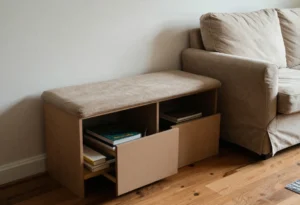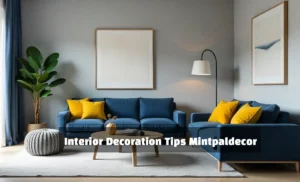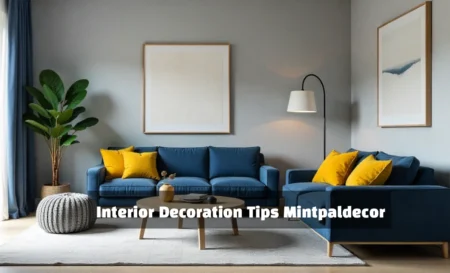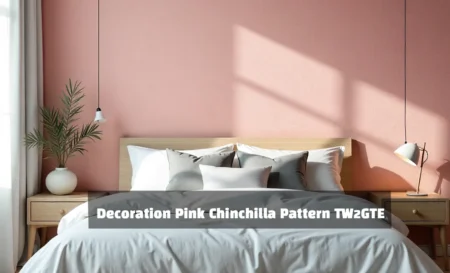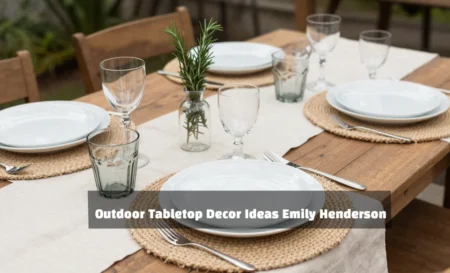An indoor oasis. Just hearing those words likely conjures up images of a relaxing, rejuvenating indoor space overflowing with lush, vibrant houseplants. Far from just a passing trend, incorporating houseplants into your home décor has numerous benefits extending far beyond pure aesthetics. Read on to learn how you can leverage the power of houseplants to create your own indoor oasis.
Simply put, an indoor oasis is any indoor space filled with thriving houseplants. More than just random assortments of greenery, these plant-based spaces are thoughtfully designed to be calming, refreshing escapes from the stress of everyday life.
You may be wondering – how exactly can a few houseplants transform an indoor area into an oasis? It largely comes down to the many positive effects plants can have on our mental wellbeing and health. Studies have shown that surrounding yourself with indoor plants can lower stress, elevate your mood, increase productivity, and even improve air quality. When leveraged purposefully within the home, houseplants have the power to turn any room into a relaxing, rejuvenating refuge.
In this article, we will explore the benefits of indoor plants in further detail. We’ll also discuss key considerations around selecting, arranging, and caring for houseplants to help you craft your own indoor plant oasis. Read on to learn how even a few strategically placed indoor plants can help you carve out tranquility in the midst of everyday chaos.
The Psychological and Health Benefits of Houseplants
Houseplants do far more than just look nice – they can provide real, measurable benefits for both your mental health and physical wellbeing. Here are some of the key ways indoor plants can enhance your life and living space:
Improved Mental Health and Focus
Simply having houseplants in your indoor environment has been linked to improved mental health, concentration, and feelings of happiness and satisfaction. A 2015 study by researchers in Norway found that simply having indoor foliage plants in the workplace can boost employee satisfaction, air quality perception, and work performance. Researchers have attributed these types of positive impacts to the natural, relaxing essence that plants impart.
Stress Reduction
Multiple studies have shown that exposure to live indoor plants can lower physiological markers of stress like blood pressure, heart rate, and muscle tension. Researchers believe this stress-reducing effect results from live plants triggering positive emotional responses and lowering anxiety. A 2018 study also found that actively tending to houseplants helped reduce levels of the stress hormone cortisol.
Mental Restoration
Another benefit of surrounding yourself with houseplants is mental restoration. Indoor plants can support our need to regularly restore depleted mental resources by serving as non-taxing objects that capture our attention in a restorative, calming way. Essentially, by directing our attention to pleasing natural stimuli like houseplants, our minds get a chance to recharge.
Increased Productivity
Due to benefits like stress reduction and mental restoration, having indoor houseplants in offices and workspaces has been linked to increased productivity. In multiple studies, employees in offices featuring live plants showed boosts in measures like idea generation and problem-solving versus those without plants. Researchers concluded that indoor plants have the ability to put employees in a more positive, productive mindset.
Air Purification
In addition to psychological benefits, many popular indoor plant varieties also contribute air-purifying properties. Plants absorb toxins and pollutants from the air like formaldehyde, benzene, and carbon monoxide and release clean oxygen via photosynthesis. Just one potted plant per 100 square feet can make a significant difference in indoor air quality. Some top air-purifying choices include peace lilies, English ivy, Chinese evergreens, and various ferns.
Improved Breathing
By naturally purifying the air of toxins, indoor plants can also lead to easier breathing for those with allergies or respiratory issues. Moisture released from plant leaves also helps keep airways from drying out. For many, a few strategically placed plants can minimize or even eliminate the need for artificial humidifiers or air purifiers.
Choosing the Right Plants
When planning your indoor oasis, carefully selecting appropriate plants is a key consideration. Factors like your space, environment, and personal needs should all inform your choices. Here are some top considerations when selecting houseplants for your home:
Lighting Needs
The most critical factor in choosing houseplants is light. All plants have ideal lighting conditions they thrive under – whether it be direct sun, low indirect light, or somewhere in-between. Assess the lighting conditions in your space, then select plants suited to that level of sun exposure. For example, low-light plants like Chinese evergreens are great choices for darker rooms, while sun-lovers like spider plants will flourish under ample sun.
Climate and Temperature Tolerance
Consider your general indoor climate and temperatures when selecting plants. Certain indoor varieties thrive better in cooler versus warmer conditions. For example, orchids do better in warmer environments, while ferns prefer cooler temps. Check each plant’s preferred climate range and opt for varieties that align. This ensures you pick houseplants that will continue to flourish.
Watering and Soil Needs
Houseplants also vary in their water and soil preferences, which can affect their care needs. Some types like moisture-retaining soil and frequent watering, while others are drought-tolerant. Assess your space – do you want low-maintenance plants you can essentially “set and forget”? Or are you willing to take on plants with more involved watering and soil needs? Matching plant selections to your lifestyle is key.
Growth Rate and Size
Another practical consideration is the growth rate and ultimate size of different houseplant varieties. Some spread rapidly and reach heights unfit for small spaces, while slow growers remain more compact. Make sure to account for how quickly each plant grows and its potential full-grown size before purchasing. Look for petite varieties for desks and shelves or larger statement plants for floor spaces.
Aesthetic Appeal
Finally, choose plants that appeal to your personal sense of style. Consider the shapes of the leaves, height, whether the plant cascades or vines, and if it produces any blooms. Curating a collection of plants with diverse leaf shapes, sizes, and textures creates visual interest. You can also coordinate colors to match your décor. Let your unique style preferences guide your selections.
Designing an Indoor Oasis
Now that you’ve selected suitable houseplants, it’s time to artfully arrange them within your space. Thoughtfully designed indoor plant displays are pleasing to the eye and maximize the soothing essence of an indoor oasis. Here are some top tips for flawlessly incorporating houseplants into your décor:
Start with Focal Points
Identify visual focal points within the space, then strategically place statement-making plants there to naturally draw the eye. Foyers, coffee tables, corners, and other focal areas are ideal spots to anchor larger, eye-catching varieties. This gives your space a clear visual starting point.
Layer Heights and Shapes
A common technique is layering plants of varying heights and silhouettes to create depth and interest. Place larger, upright plants at the back and cascade smaller trailing varieties along edges and surfaces in front. The layers lend visual complexity while also showcasing each plant.
Display Plants En Masse
Displaying identical or similar plants together en masse packs a dramatic visual punch. Try clustering several potted palms in a corner, lining a long shelf with philodendrons, or creating a “grove” of bamboo. Repetition of the same plant creates cohesiveness and harmony.
Combine Plants and Planters
For another dose of visual interest, play around displaying the same plant varieties in an eclectic mix of planters and pots. Try a trailing pothos in a hanging ceramic pot next to the same variety in a metal basket. Mixing up vessels keeps displays from feeling monotonous.
Add Visual Balance
Aim for visual symmetry and balance in plant arrangements. Offsetting tall upright plants with smaller cascading varieties helps keep displays from looking lopsided. Try flanking a focal point with identical plants on either side to create pleasant symmetry.
Use Natural Teaming
Some houseplants naturally grow well together as companion plants. For example, creating mixed displays with prayer plants, ferns and ivy that thrive in the same conditions guarantees healthy, vibrant plants. Do some research online to discover natural teaming pairings.
By thoughtfully following professional design tactics like these, it becomes easy to artfully infuse any space with live plants. Remember to step back periodically to ensure your displays strike the right visual balance. Thoughtful plant arrangements contribute to the peaceful essence of an indoor oasis.
Stimulate the Sense of Smell
Certain houseplants emit pleasant natural aromas that gently scent indoor spaces. Scented geraniums, jasmine, lavender, rosemary, lemon verbena, and mint are all popular choices. Strategically place fragrant plants in frequently used areas like bedrooms and living rooms to infuse your indoor oasis with lovely scents.
Add Tactile Texture
Some houseplant varieties have delightfully tactile leaves and textures. Soft, fuzzy lamb’s ear, the waxy leaves of jade plants, and the rippled leaves of currant tomato plants are prime examples. Place these plants where they can be gently touched and enjoyed. Consider putting them along a frequently walked path or on a sofa side table to encourage interaction.
Contrast Shiny and Matte Finishes
Play with mixing houseplants with glossy and matte foliage finishes for visual and textural contrast. Pair the matte, velvety leaves of a heartleaf philodendron next to the ultra-glossy leaves of a Chinese evergreen. This creates appealing visual and tactile diversity indoors.
Use Plants That Bloom or Fruit
For periodic sensory stimulation, incorporate plants that produce blooms, flowers or edible fruit. The visual excitement of an orchid in bloom or a fresh Meyer lemon on a fruiting lemon tree makes for an engaging indoor oasis. The key is selecting flowering and fruiting plants aligned to your growing conditions.
Create Playful Sounds
Some houseplants produce playful sounds when stimulated that can add interactive accents to your indoor oasis. Floating water lettuce varieties make gentle splashing sounds when disturbed in a bowl or basin of water. Sensitive mimosa pudica plant leaves audibly fold up when touched. Adding in these interactive sonic details brings spaces to life.
By engaging all the senses, indoor plants can transform any room into a truly immersive indoor oasis. Make plant selections guided by scent, texture, visual contrast and interactive dynamics to design a multi-sensory plant space. Soon your indoor retreat will delight all the senses and refresh the body, mind and spirit.
Overcoming Common Challenges
While indoor plants undoubtedly enhance home décor and wellbeing when properly supported, they can pose some care challenges at times. However, there are solutions to all common houseplant issues. Here are some top troubleshooting tips:
Declining Health
If leaves are spotting, browning, yellowing or dropping, the plant is likely stressed. Assess your care regimen – is the plant getting adequate sunlight and water? Are temperatures ideal? Is the soil draining properly? Make any needed adjustments to get conditions right. Also inspect regularly for pests that could impact plant health.
Insect Pests
Fungus gnats, spider mites, aphids and mealybugs are common houseplant pests. Isolate any infested plants immediately. For small infestations, wipe leaves with mild soap water or neem oil. Remove any heavily infested leaves. Introduce predatory insects if needed, like ladybugs for aphids. Discard severely infested plants.
Dusty Leaves
Plants with large, wide leaves like monsteras easily get dusty. Dust diminishes their visual appeal over time. Combat dust by regularly wiping plant leaves down with a damp cloth or taking plants into the shower to rinse leaves off periodically. This restores their lush green vibrancy.
Pet Damage
Pets can inadvertently damage houseplants through chewing, digging or toppling. Choose pet-safe plants and use deterrents like citrus peels or pepper powder around vulnerable plants. Place flat stones in potting mix to discourage digging. Also elevate fragile plants onto shelves or plant stands safely out of reach.
Insufficient Watering
Underwatering is a common reason for houseplants declining. Each plant has different watering needs based on factors like sunlight, climate, soil type and size. Learn the ideal watering regime for each of your plants, then water on this schedule. Water more frequently in warmer months or when plants are actively growing.
Overwatering
On the flip side, overwatering is just as detrimental. Waterlogged soil leads to root rot, fungus gnats, wilting, spotty leaves and potentially plant death. Never water on a set timeline, but instead when soil is partially dry. Ensure pots have drainage holes and use well-draining soil mixes to prevent standing water.
With the right troubleshooting and preventative care, indoor plant challenges can be readily overcome. A thriving indoor oasis hinges on providing plants exactly what they need to stay happy and healthy in your home’s conditions.
Case Studies and Examples
The possibilities are endless when leveraging houseplants to create an indoor oasis tailored exactly to your space and needs. Let’s explore some real-world examples that highlight just a few of the ways indoor plants can be utilized within different rooms:
Jungle Bathroom
This bathroom was transformed into an indoor jungle oasis using a collection of tropical houseplants. The high-humidity environment from the shower and bathtub in this space is ideal for tropical varieties like ferns, orchids, philodendrons and palms.Arranging the plants at varying heights near the tub and around the vanity creates an immersive, spa-like feel.
Kitchen Herb Garden
The array of sun-loving herbs along this kitchen windowsill doubles as both an attractive display and a functional culinary herb garden. Offering immediate access to fresh herbs like basil, oregano and thyme takes this space’s usefulness and visual appeal up a notch. The herbs’ scent also adds pleasant aromatherapy notes to the kitchen.
Living Room Terrariums
These mini tabletop terrariums artfully grouped down the center of the coffee table add serene living room style. Each delicate ecosystem encased in glass contains lush ferns, air plants, moss and other tropical varieties. The terrariums’ compact size makes them perfect for plant lovers with limited space. Their clean modern styling also blends seamlessly with the room’s sleek décor.
Bedroom Vertical Garden
Creating vertical indoor gardens is an excellent option for smaller spaces like apartments. Here, a series of floating shelves on the bedroom wall were converted into a vertical garden display. Trailing succulents and small houseplant varieties that tolerate low light were used to create a lush plant “wall” without taking up floor space. The result is a soothing burst of nature perfect for waking up to.
These examples demonstrate how houseplants can enhance the style and atmosphere of virtually any indoor space when thoughtfully incorporated. Whether you crave a lush tropical vibe or clean modern gardening style, plants allow you to realize your ideal oasis.
Maintenance and Care
To keep your indoor oasis thriving season after season, plants need proper maintenance and care adapted to your unique growing conditions. Here are some top tips for successfully caring for houseplants long-term:
Water Based on Plant Needs
Rather than on a fixed schedule, water plants only when the soil is partly dry to the touch. The frequency will vary based on factors like sunlight, plant size, soil type and climate. Get to know each plant’s preferences and water thoroughly only as needed.
Offer Proper Sunlight
Rotate plants regularly so all sides get even sunlight exposure. Move sun-loving plants into brighter spaces during darker winter months. Add supplemental grow lights if natural light is insufficient. Offering appropriate light prevents stretching and wilting.
Maintain Ideal Temperature
During the heating season, use humidifiers as needed in dry indoor environments to keep plants happy. Move plants away from hot and cold drafts from vents or windows to prevent shock. Most varieties thrive at typical indoor temperatures around 65-75°F.
Prune and Shape When Required
Prune back plants like pothos, philodendrons and monsteras to shape them and encourage bushier growth. Remove yellow, dying foliage and trim back any excessive trailing lengths. Limit pruning to the most active growth seasons like spring and summer.
Repot Plants as Needed
Re-pot root-bound plants into the next sized pot with fresh, nutrient-rich soil to allow for growth. Signs of root-bounding include stunted growth and roots emerging from the drainage holes below. Most varieties need repotting every 2-3 years on average.
Fertilize During Growth Seasons
Feed plants monthly during peak growing seasons using a balanced liquid fertilizer diluted to half-strength. Cease fertilizing during fall and winter when plants enter dormancy. Fertilizing nourishes plants and replaces depleted nutrients from the soil.
By tailoring care to your environment and plants’ needs, it becomes simple to maintain a thriving indoor plant oasis for enjoyment year after year. Consistent care rewards you with healthy, lush plants that uplift any living space.
Personalizing Your Indoor Oasis
A final consideration when designing with indoor plants is choosing varieties that personally appeal to your tastes and lifestyle needs. Here are some ideas for personalizing plants to your unique style or living space:
Embrace Your Favorite Color
Incorporate houseplants with foliage that complements your favorite interior colors. For example, coordinate pink plants like Chinese evergreens with a rosy décor, or opt for blue-hued succulents to match a cool blue palette. Let your personalized color preferences guide plant choices.
Showcase Heirloom Varieties
Seek out heirloom or peculiarly patterned varieties of classic houseplants for rare and unique touches. Variegated monsteras with painted-looking leaves, ruffled orchids, or zebra-striped Haworthias make exciting conversation pieces.
Accent with Fruiting Plants
For a functional indoor oasis, add edible fruiting plants like dwarf Meyer lemon trees, strawberry plants, or mini tomato vines. Enjoy snipping fresh garnishes, fruits or veggies right in your kitchen or living spaces.
Incorporate Regional Plants
Highlight your regional identity or travels through houseplant choices. Display tropicals like birds of paradise if you live in Hawaii or palm trees for a California vibe. Or spotlight souvenir cacti and succulents from your desert adventures.
Display Sentimental Plants
Add living mementos by displaying plant clippings rooting in water from weddings, special occasions or treasured plants inherited through generations. These meaningful plants infuse spaces with personal history.
Accommodate Pet Preferences
If you have pets, choose hardy, non-toxic plants that can withstand a wagging tail or curious cat without harm. Pet-friendly options include spider plants, ponytail palms, Boston ferns and parlor palms.
Style with Vintage Cachepots
For one-of-a-kind vintage flair, display prized plants in antique, passed-down or thrifted plant vessels. Repurposed teapots, painted pots or macramé plant hangers give indoor oases a timeworn appeal.
Personalize your indoor plant oasis by choosing varieties that let you express your style, tastes and family traditions. Soon your plant collection will become as unique as you are!
Conclusion
Creating an indoor oasis brimming with houseplants offers benefits extending far beyond aesthetics alone. Intentionally filling your home with thriving, lush greenery can reduce stress, boost mood and productivity, purify air, and provide a peaceful refuge from life’s chaos.
By thoughtfully selecting suitable plants, artfully designing displays, engaging the senses, and providing attentive care, you can cultivate a tranquil indoor plant haven tailored exactly to your needs and tastes. Your living environment will offer visual delight while also promoting your mental and physical wellbeing.
To embark on your indoor oasis journey, start small. Add a few low-maintenance plants to frequently enjoyed spaces, then build your indoor garden as you gain experience and inspiration. Soon you’ll be eagerly seeking out new nooks to infuse with nature’s peace. With the right know-how, anyone can unlock the power of houseplants to transform their indoor world into a verdant sanctuary.
